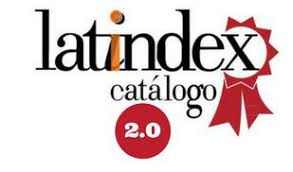USO DEL LÁSER DE DIODO COMO COADYUVANTE EN EL TRATAMIENTO PERIODONTITIS CRÓNICA
DOI:
https://doi.org/10.31984/oactiva.v4i2.337Palabras clave:
Periodontitis Crónica, láser diodo, terapia periodontal no quirúrgicaResumen
OBJETIVO: Debido a la falta de información estandarizada y la falta de consenso frente a la aplicación del láser de diodo como complemento de la terapia periodontal no quirúrgica y su eficacia clínica, el propósito de este trabajo es analizar los fundamentos que sustentan la controversia. MATERIALES Y MÉTODOS: Se seleccionaron 10 trabajos entre los años 2013 a 2018. Los parámetros utilizados difieren entre los estudios realizados, aún empleando iguales longitudes de onda. Los dos estudios que incluyeron análisis microbiológicos demostraron que, con el uso de esta tecnología, disminuía la carga microbiana. RESULTADOS: La evidencia actual muestra resultados clínicos controversiales. Los estudios revisados se enfocan sobre todo en las fases iniciales de la enfermedad periodontal con profundidades de sondaje entre 4mm o 6 mm y evalúan a los pacientes en diferentes estadíos de la enfermedad. CONCLUSIONES: Se necesitan ensayos clínicos aleatorizados controlados, pero con protocolos similares en términos de parámetros de uso del láser y que informen resultados mensurables de manera uniforme. Sin embargo, la tendencia actual es que la aplicación del láser de diodo como coadyuvante en el tratamiento periodontal permite obtener mejores índices periodontales en la reevaluación del paciente. Por lo tanto, el empleo de esta tecnología podría reducir la necesidad de tratamiento quirúrgico convencional adicional.
Descargas
Citas
Einstein A. Zur quantentheorie der strahlung. Phys Z.1917;18:121–128.
Bayat M, Virdi A, Jalalifirouzkouhi R, Rezaei F. Compari-son of effects of LLLT and LIPUS on fracture healing inanimal models and patients: A systematic review. Progressin biophysics and molecular biology. 2018;132:3–22.
Barolet D, Christiaens F, Hamblin MR. Infrared and skin:Friend or foe. Journal of Photochemistry and PhotobiologyB: Biology. 2016;155:78–85.
Cobb CM. Lasers in periodontics: a review of the literature.Journal of periodontology. 2006;77(4):545–564.
Qadri T, Javed F, Johannsen G, Gustafsson A. Role of diodelasers (800–980 nm) as adjuncts to scaling and root planingin the treatment of chronic periodontitis: a systematic re-view. Photomedicine and laser surgery. 2015;33(11):568–575.
Moskvin SV. Low-level laser therapy in Russia: history,science and practice. Journal of lasers in medical sciences.2017;8(2):56.
Aoki A, Mizutani K, Schwarz F, Sculean A, Yukna RA,Takasaki AA, et al. Periodontal and peri-implant woundhealing following laser therapy. Periodontology 2000.2015;68(1):217–269.
Chaves M. E. D. A., Araújo A. R. D., Piancastelli A. C. C.,& Pinotti M. Effects of low-power light therapy on woundhealing: LASER x LED. Anais brasileiros de dermatologia.2014;89(4):616–623.
Cobb CM, Low SB, Coluzzi DJ. Lasers and the treatment ofchronic periodontitis. Dental Clinics. 2010;54(1):35–53.
Pamuk F, Lütfio ̆glu M, Aydo ̆gdu A, Koyuncuoglu C, Cif-cibasi E, Badur O.The effect of low-level laser therapy asan adjunct to non-surgical periodontal treatment on gingivalcrevicular fluid levels of transforming growth factor-beta 1,tissue plasminogen activator and plasminogen activator in-hibitor 1 in smoking and non-smoking chronic periodontitispatients: A split-mouth, randomized control study.Journal ofperiodontal research. 2017;52(5):872–882.
Gündo ̆gar H, ̧Senyurt S.Z., Erciyas K, Yalım M,ÜstünK. The effect of low-level laser therapy on non-surgicalperiodontal treatment: a randomized controlled, single-blind, split-mouth clinical trial. Lasers in medical science.2016;31(9):1767–1773.
Roncati M, Gariffo A, Barbieri C, Vescovi P. Ten-YearNonsurgical Periodontal Treatment Protocol with Adjuncti-ve Use of Diode Laser Monitoring Clinical Outcomes in 6mm Pockets: A Retrospective Controlled Case Series. In-ternational Journal of Periodontics & Restorative Dentistry.2017;37(5)
Fenol A, Boban NC, Jayachandran P, Shereef M, Balakrish-nan B, Lakshmi P. A qualitative analysis of periodontalpathogens in chronic periodontitis patients after nonsurgicalperiodontal therapy with and without diode laser disinfec-tion using Benzoyl–DL arginine-2-naphthylamide test: Arandomized clinical trial. Contemporary Clinical Dentistry.2018;9(3):382.
Duki ́c W, Bago I, Aurer A, Rogulji ́c M. Clinical effecti-veness of diode laser therapy as an adjunct to non-surgicalperiodontal treatment: a randomized clinical study. Journalof periodontology. 2013;84(8):1111–1117.
Raj D, Chakrabarty H, Badr J, Das G, Pal T. A comparativeevaluation between chlorhexidine chip and diode laser as anadjunct to scaling and root planing in patients with chronicperiodontitis. JIDA: Journal of Indian Dental Association.2017;11(5).
Balasubramaniam AS, Thomas LJ, Ramakrishnanan T, Am-balavanan N. Short-term effects of nonsurgical periodontaltreatment with and without use of diode laser (980 nm) onserum levels of reactive oxygen metabolites and clinical pe-riodontal parameters in patients with chronic periodontitis:A randomized controlled trial. Quintessence International.2014;45(3).
Thakare KS, PuriSneha S, BhongadeManohar L. Evaluationof effectiveness of diode LASER for the treatment of pe-riodontal pocket. Indian Journal of Dental Advancements.2013;5(4):1364–1371.
Alzoman H, Diab H. Effect of gallium aluminium arsenidediode laser therapy on P orphyromonas gingivalis in chronicperiodontitis: a randomized controlled trial. Internationaljournal of dental hygiene. 2016;14(4):261–266.
Saglam M, Kantarci A, Dundar N, Hakki SS. Clinicaland biochemical effects of diode laser as an adjunct tononsurgical treatment of chronic periodontitis: a randomi-zed, controlled clinical trial. Lasers in medical science.2014;29(1):37–46.
Publicado
- Resumen 928
- PDF 747
- HTML 153
Cómo citar
Número
Sección
Licencia
Se autoriza la reproducción total y parcial, y la citación del material que aparece en la revista, siempre y cuando se indique de manera explícita: nombre de la revista, nombre del autor(es), año, volumen, número y páginas del artículo fuente. Las ideas y afirmaciones consignadas por los autores están bajo su responsabilidad y no interpretan necesariamente las opiniones y políticas del Consejo Editorial de la Revista OActiva ni de la Universidad Católica de Cuenca.
La Revista OActiva utiliza la Licencia Creative Commons de Reconocimeinto-NoComercial-CompartirIgual 4.0, que es la siguiente: CC BY-NC-SA 4.0 Internacional.











